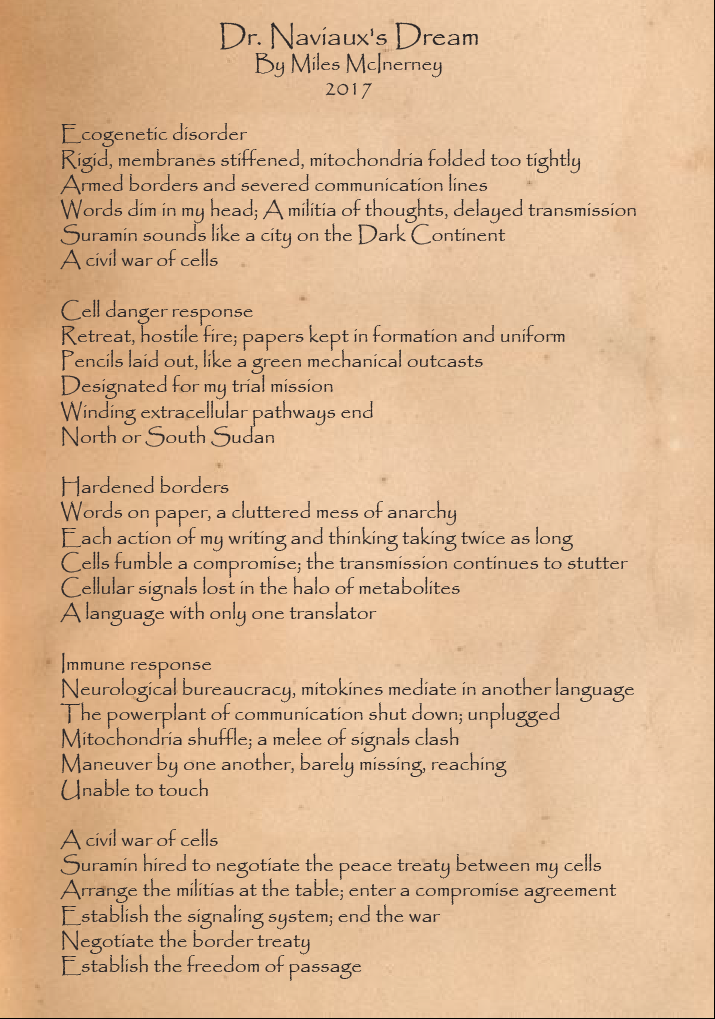
Hypothesis: Autism spectrum disorder is a medical condition caused by recurrent or persistent activation of the cell danger response (CDR) during early child development.
Research in our lab has led us to the conclusion that the root cause of ASD is a persistent cell danger response (CDR) that results from hypersensitivity to ATP-related, purinergic signaling1-7. Children at risk are born with a latent polygenic hypersensitivity trait that makes them more sensitive to many kinds of environmental changes. These changes can be genetic, metabolic, or microbial exposures, or exposure to certain kinds of pollution in the air, water, or food chain that occur during a critical window in early child development.
Autism is therefore an “ecogenetic” syndrome that alters child development. ASD is the result of gene x environment interactions. The CDR hypothesis proposes that all the core symptoms of ASD are traceable to a treatable metabolic syndrome. Metabolism is the chemistry that cells use to communicate, heal, and grow. This metabolic syndrome can be improved by many different treatments, but is fundamentally caused by persistent abnormalities in purinergic signaling.
By treating the root cause of ASD—abnormalities in purinergic signaling that can be treated with new antipurinergic therapies—we believe many children will have chance to lose the symptoms that hold them back. Many children will be able to come off spectrum, and many children will be able to live independent lives as adults, when just a few years ago this notion seemed impossible.
- An in-depth review of antipurinergic therapy for autism
- The SAT1 clinical trial, published in Annals of Clinical and Translational Neurology
- Parent statements
- Questions and answers with Dr. Naviaux
- Cautionary statement about suramin
- A physician’s poem of hope
- UCSD website with content about the suramin clinical trial
- N of One website with content about the trial
- UCSD Triton Magazine Story, Fall 2017
- Suramin updates, 2020—An Interview with Dr Naviaux by Lisa Ackerman
- Reading—Purines, the CDR, ASD, and Healing
The CDR is maintained by increased purinergic signaling6-8 that results from the release of nucleotides like ATP, ADP, UTP, UDP, and other metabolites that trace to mitochondria in cells under stress. This is the proposed sequence: ecogenetic injury —> mitochondrial stress —> ATP and metabokine leak —> persistent CDR activation —> ASD and several other disorders. Purinergic receptors are widely distributed on every cell type in the body. When activated, they can signal danger or trigger inflammation and pain. Nucleotides like ATP are co-neurotransmitters and neuromodulators at every synaptic junction studied to date. They are particularly important for cells in the nervous system, immune system, and the GI tract, which in turn, affects the gut microbiome. Suramin is a non-selective inhibitor of purinergic signaling, an antipurinergic drug, or APD for short. Suramin works in several ways to inhibit purinergic signaling. One way is to act as a competitive inhibitor of ATP binding to cell surface receptors. Another way is to block the release of intracellular ATP through pannexin-P2X7 channels into the extracellular space. Working in these ways, suramin sends an “all’s clear” signal to the cell. One way to think about suramin action is as “molecular armistice therapy”—a metabolic signal that the danger has passed and cellular resources can be directed away from defense and returned to “peace time” activities like normal neurodevelopment, healing, and growth.
We have just completed the first clinical trial to test the safety and efficacy of suramin in children with autism (https://clinicaltrials.gov/ct2/show/NCT02508259).
References
- Naviaux, R.K. Antipurinergic therapy for autism—an in-depth review. Mitochondrion. PMID: 29253638, 2017.
- Naviaux, J.C., et al. Antipurinergic therapy corrects the autism-like features in the Fragile X (Fmr1 knockout) mouse model. Molecular Autism 6, 1 (2015).
- Naviaux, R.K., et al. Reversal of autism-like behaviors and metabolism in adult mice with single-dose antipurinergic therapy. Translational Psychiatry. PMID: 24937094, 2014.
- Naviaux, R.K. Metabolic features of the cell danger response. Mitochondrion 16, 7-17 (2014).
- Naviaux, R.K., et al. Antipurinergic Therapy Corrects the Autism-Like Features in the Poly(IC) Mouse Model. PloS One (2013).
- Naviaux, R.K. Oxidative shielding or oxidative stress? J Pharmacol Exp Ther 342, 608-618 (2012).
- Naviaux, R.K. Mitochondria and Autism. in The Neuroscience of Autism Spectrum Disorders (eds. Buxbaum, J.D. & Hof, P.R.) 179-193 (Academic Press, Elsevier, Waltham, MA, 2012).
- Burnstock, G. Introduction to purinergic signalling in the brain. Advances in experimental medicine and biology 986, 1-12 (2013).
- Burnstock, G. Purinergic mechanisms and pain–an update. Eur J Pharmacol 716, 24-40 (2013).
- Burnstock, G. Discovery of purinergic signalling, the initial resistance and current explosion of interest. British journal of pharmacology 167, 238-255 (2012).


